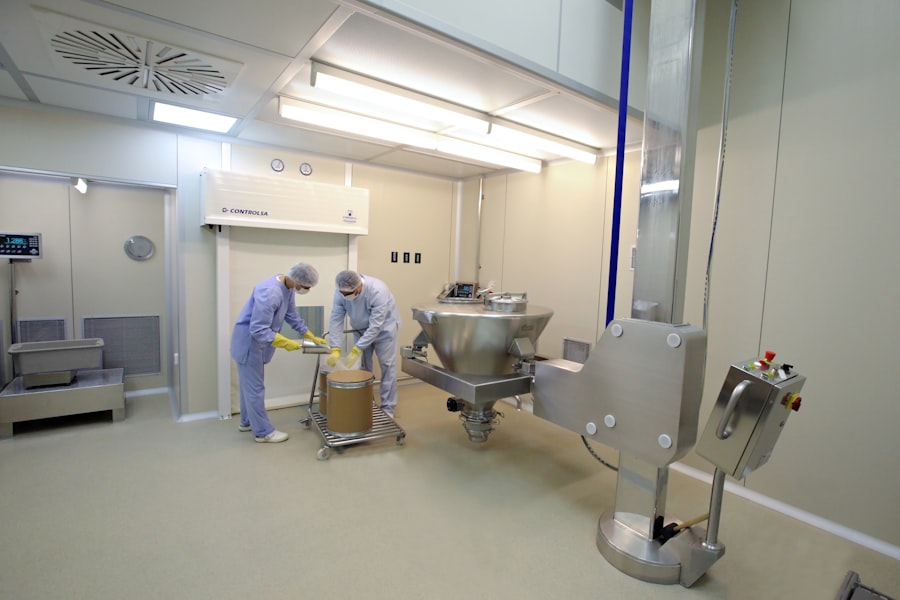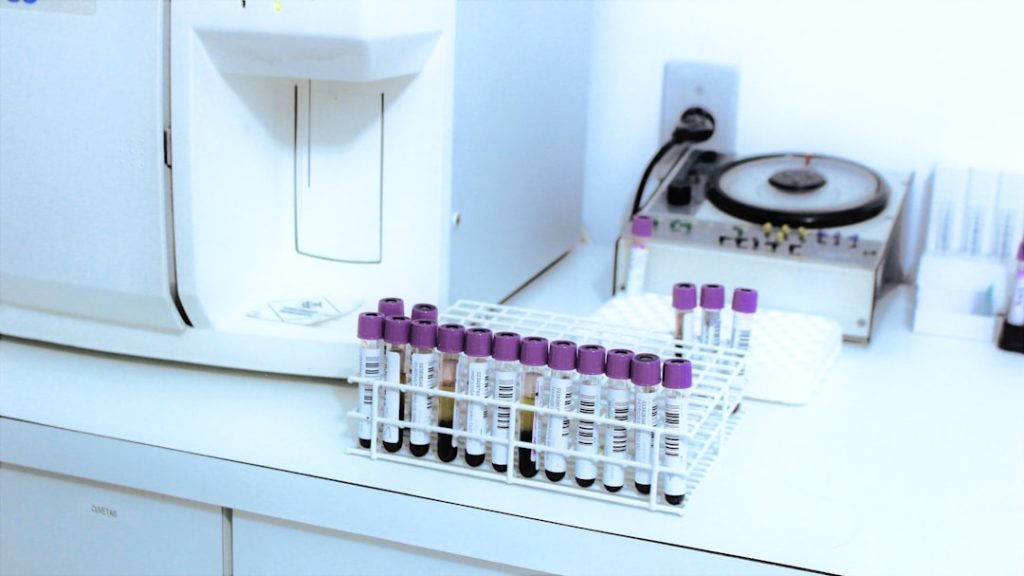Clinical Trial Management Systems (CTMS) have emerged as indispensable tools in the realm of clinical research, providing a structured framework for managing the complexities of clinical trials. These systems are designed to streamline the planning, tracking, and management of clinical studies, ensuring that they adhere to regulatory requirements while optimizing resource allocation. The evolution of CTMS has been driven by the increasing complexity of clinical trials, which often involve multiple sites, diverse patient populations, and stringent compliance mandates.
As the pharmaceutical and biotechnology industries continue to innovate, the need for robust systems that can handle vast amounts of data and facilitate collaboration among stakeholders has never been more critical. CTMS solutions encompass a wide range of functionalities, including study planning, site management, patient recruitment, data collection, and regulatory compliance. By centralizing these processes, CTMS not only enhances operational efficiency but also improves the quality of data collected during trials.
The integration of advanced technologies such as artificial intelligence and machine learning into CTMS platforms further amplifies their capabilities, enabling real-time data analysis and predictive modeling. As a result, organizations can make informed decisions that drive trial success and ultimately bring new therapies to market more swiftly.
Key Takeaways
- CTMS enhances clinical trial management by centralizing data and streamlining workflows.
- Implementing CTMS improves team collaboration and communication across trial phases.
- Utilizing data analytics within CTMS drives better decision-making and operational efficiency.
- Integrating CTMS with other clinical systems ensures seamless data flow and reduces redundancies.
- Following best practices in CTMS use maximizes trial efficiency and overall management effectiveness.
Benefits of CTMS for Clinical Trial Management
The benefits of implementing a CTMS are manifold, significantly impacting various aspects of clinical trial management. One of the most notable advantages is the enhancement of operational efficiency. By automating routine tasks such as patient enrollment tracking and site performance monitoring, CTMS reduces the administrative burden on research teams.
This automation allows clinical research associates (CRAs) and project managers to focus on more strategic activities, such as engaging with sites and addressing potential issues proactively. Consequently, trials can progress more smoothly, with fewer delays caused by administrative bottlenecks. Moreover, CTMS facilitates improved data integrity and compliance with regulatory standards.
With built-in audit trails and real-time monitoring capabilities, these systems ensure that all data is accurately captured and easily retrievable for regulatory inspections. This level of oversight is crucial in maintaining the credibility of trial results and safeguarding patient safety. Additionally, CTMS can help organizations stay compliant with evolving regulations by providing updates and alerts regarding changes in guidelines, thereby minimizing the risk of non-compliance.
Implementation of CTMS in Clinical Trial Management

Implementing a CTMS requires careful planning and consideration to ensure that it aligns with the specific needs of an organization. The first step in this process typically involves conducting a thorough needs assessment to identify the unique challenges faced by the clinical trial team. This assessment should encompass an evaluation of existing workflows, data management practices, and communication channels among stakeholders.
By understanding these elements, organizations can select a CTMS that offers the necessary features and functionalities to address their specific requirements. Once a suitable CTMS has been chosen, the next phase involves configuring the system to fit the organization’s workflows. This may include customizing user interfaces, setting up data fields relevant to specific trials, and integrating existing databases or software solutions.
Training is another critical component of successful implementation; all users must be adequately trained on how to navigate the system and utilize its features effectively. Ongoing support and feedback mechanisms should also be established to address any challenges that arise post-implementation, ensuring that the system continues to meet evolving needs.
Streamlining Processes with CTMS
| Metric | Description | Before CTMS Implementation | After CTMS Implementation | Improvement |
|---|---|---|---|---|
| Study Start-Up Time | Average time taken to initiate a clinical trial | 90 days | 45 days | 50% reduction |
| Data Entry Errors | Number of errors per 1000 data points entered | 15 errors | 5 errors | 67% reduction |
| Protocol Deviation Rate | Percentage of visits with protocol deviations | 8% | 3% | 62.5% reduction |
| Query Resolution Time | Average time to resolve data queries (days) | 10 days | 4 days | 60% reduction |
| Regulatory Document Preparation | Time to prepare and submit regulatory documents (days) | 30 days | 15 days | 50% reduction |
| Site Monitoring Visits | Number of on-site monitoring visits per study | 12 visits | 7 visits | 42% reduction |
| Overall Study Cost | Relative cost index (baseline = 100) | 100 | 75 | 25% cost savings |
CTMS plays a pivotal role in streamlining various processes involved in clinical trial management. One key area where this is evident is in patient recruitment and retention. Traditional methods of tracking patient enrollment can be cumbersome and prone to errors; however, CTMS provides tools for real-time monitoring of recruitment metrics.
By analyzing data on patient demographics and site performance, research teams can identify which sites are performing well and which may require additional support or resources. This targeted approach not only accelerates recruitment timelines but also enhances patient engagement throughout the trial. Another significant process that benefits from CTMS is site management.
Coordinating activities across multiple sites can be challenging, particularly when dealing with different regulatory environments and site-specific protocols. CTMS centralizes site information, allowing project managers to monitor site performance metrics such as visit frequency, data entry timelines, and query resolution rates. This visibility enables proactive management of sites, ensuring that any issues are addressed promptly before they escalate into larger problems that could jeopardize trial timelines.
Maximizing Team Collaboration with CTMS
Effective collaboration among team members is essential for the success of any clinical trial, and CTMS fosters this collaboration through its integrated communication features. By providing a centralized platform where all stakeholders can access relevant information, CTMS eliminates silos that often hinder communication in clinical research settings. Team members can share updates on patient status, site performance, and data collection efforts in real time, ensuring that everyone is on the same page.
Additionally, CTMS often includes tools for task assignment and tracking, which further enhances collaboration. Project managers can assign specific tasks to team members with clear deadlines and expectations. This transparency not only holds individuals accountable but also allows for better workload distribution among team members.
As a result, teams can work more cohesively towards common goals, ultimately improving trial outcomes.
Utilizing Data and Analytics in CTMS for Efficiency

The integration of data analytics within CTMS represents a transformative shift in how clinical trials are managed. By harnessing the power of data analytics, organizations can gain valuable insights into trial performance and patient outcomes. For instance, predictive analytics can be employed to forecast patient enrollment trends based on historical data, enabling teams to adjust their strategies proactively.
This capability is particularly beneficial in identifying potential bottlenecks early in the trial process. Moreover, real-time data analysis allows for continuous monitoring of key performance indicators (KPIs) throughout the trial lifecycle. By tracking metrics such as patient dropout rates or site activation timelines, organizations can make informed decisions that enhance operational efficiency.
For example, if a particular site is underperforming in terms of patient enrollment, project managers can investigate the underlying causes—be it staffing issues or inadequate outreach efforts—and implement corrective actions swiftly.
Integrating CTMS with Other Clinical Trial Systems
The effectiveness of a CTMS is significantly enhanced when it is integrated with other clinical trial systems such as Electronic Data Capture (EDC), Laboratory Information Management Systems (LIMS), and Regulatory Document Management Systems (RDMS). This integration creates a seamless flow of information across different platforms, reducing the risk of data discrepancies and improving overall data quality. For instance, when patient data collected through EDC is automatically synchronized with CTMS, it eliminates the need for manual data entry, thereby minimizing errors and saving time.
Furthermore, integrating CTMS with other systems facilitates comprehensive reporting capabilities. Organizations can generate holistic reports that encompass data from multiple sources, providing a complete picture of trial progress and outcomes. This level of integration not only enhances operational efficiency but also supports better decision-making by providing stakeholders with access to all relevant information in one place.
Best Practices for Maximizing Efficiency with CTMS
To fully leverage the capabilities of a CTMS and maximize efficiency in clinical trial management, organizations should adhere to several best practices. First and foremost is the importance of user training; ensuring that all team members are proficient in using the system is crucial for its successful adoption. Regular training sessions should be conducted to keep users updated on new features or functionalities introduced in the system.
Another best practice involves establishing clear protocols for data entry and management within the CTMS. Standardizing processes helps maintain data integrity and ensures consistency across trials. Additionally, organizations should regularly review their workflows to identify areas where further efficiencies can be gained—this might involve automating certain tasks or re-evaluating roles within the team.
Finally, fostering a culture of continuous improvement is essential for maximizing the benefits of a CTMS. Encouraging team members to provide feedback on system usability and functionality can lead to valuable insights that inform future enhancements or adjustments to workflows. By remaining adaptable and open to change, organizations can ensure that their use of CTMS evolves alongside advancements in clinical research methodologies and technologies.




